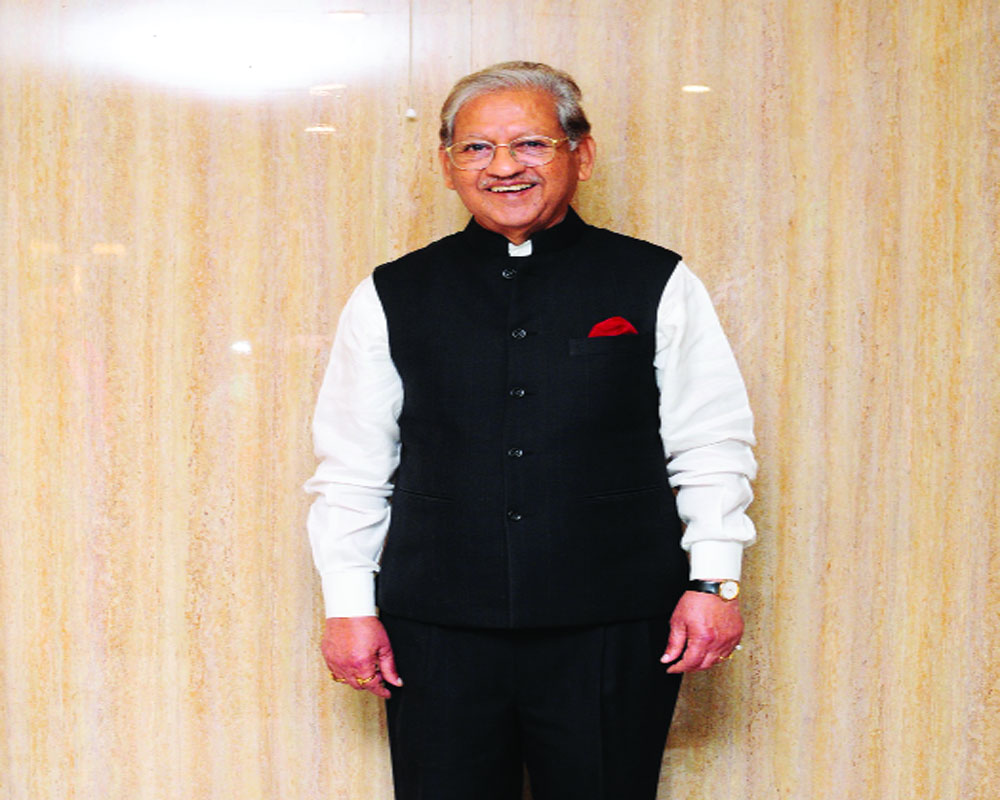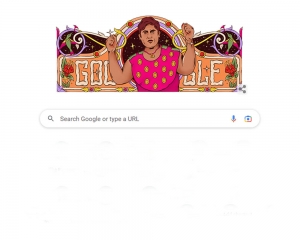At the trailer release of The Tashkent Files, Lal Bahadur Shastri’s son Sunil Shastri and his grandson Sanjay Nath Singh tell Saimi Sattar what it means to live without a sense of closure about the death of the second Prime Minister of the country
If there was a whodunnit in Indian politics that would require the combined skills of Agatha Christie, Alfred Hitchcock and Sherlock Holmes, Prime Minister Lal Bahadur Shastri’s suspicious death in Tashkent on January 11, 1966, would certainly qualify as one. Maybe given the international angle that the conspiracy has, since he died in what was the former Soviet Russia during the Cold War, a Robert Ludlum might even be summoned to shore up the forces.
The Tashkent Files, a film by director Vivek Agnihotri, is the first one to be dedicated to “honest journalists”and tries to answer some questions related to his death. To be released on April 12, in the thick of the election season, the trailer launch saw the late Prime Minister’s family turn out in full force. Sunil Shastri, his son, was just 15 when Lal Bahadur was sworn in as Prime Minister on June 9, 1964 and can recollect his death clearly. “There was always a doubt in my mind about the manner in which he died. As a teenager, it really had an effect on me. Of course, much of it has to do with my mother, Lalita Shastri, who spoke about it at length in an interview in a weekly Hindi newspaper and also in her book, Mere Pati Mere Devata,” says Sunil.
There are many things that have given rise to the belief that the death, which was attributed to a heart attack, was not normal. “Initially, my mother and the rest of the family were not allowed near his body. When we were, his face was smeared with sandalwood paste but it was apparent that his body had turned blue. There were white marks and he had bled from his nose and back. Yet no post mortem was conducted,” he says.
The concerns of the family revolve around not just the lack of an autopsy but the fact that all the documents related to his death have not been made public. There is the correspondence between the Ministry of External Affairs and the Indian Embassy after the death of the Prime Minister that is classified. The entire lot of papers related to the Raj Narain Committee, constituted by the Janata Party in 1977 to look into the mysterious death, remain untraceable from the Parliament’s library. Despite repeated attempts by the family as well as others, documents related to his accidental death remain classified as under Section 18 (1) of the RTI Act they can cause “national unrest and upheaval and international embarrassment” as per the Prime Minister’s Office. But Sunil wants to know, “How will the revelation of the truth affect these?”
There were other issues that indicate a cover-up. Two people, his personal physician, Dr R N Chugh, and his assistant, Ram Nath, who had accompanied him to Tashkent, were killed in road accidents. “Before his death, whenever we questioned Ram Nath, who my father treated like a son, he always cried and seemed to be under a lot of pressure. The mystery deepened when he met with one accident where he lost his legs and then another where he completely lost his memory. Dr Chugh too died in an accident while going back to his house along with his family,” he says.
Veteran journalist Kuldip Nayyar, who was the Prime Minister’s press advisor from 1960 to 1964 and travelled with him extensively, including on the fateful Tashkent tour was one of the first people to see his body and covered it with the Indian flag. Lalita Shastri did tell him about the marks and cuts on Shastri’s body, which he documented in his book Beyond the Lines that was published in 2012. But what is even more telling is that Nayyar, towards the end of his life, did tell the family that he believed that the Prime Minister died mysteriously.
Rumours swirled at the time of his death about the involvement of his powerful rivals in the Congress who, supposedly along with Russia’s help, eliminated him as within the 18 months that he was the Prime Minister, his popularity was unprecedented and growing. Of course, another theory attributed the deed to the CIA which wanted to arrest India’s march towards becoming a nuclear power. However, Sunil refuses to agree or dismiss any of the theories. “Let the film be released and we will talk about it,” he says with a laugh in a grandfatherly tone.
The family does feel that there is a lot in store for it with the release of the film. “We approached every government, Congress and non-Congress, including the one led by Chandrashekhar, but no action was taken. The film has given us the only ray of hope as we are yet to get a closure,” he says.
According to the Tashkent Agreement signed with the Pakistan President General Mohammed Ayub Khan and mediated by Soviet premier Aleksey Kosygin on January 10, for the ceasefire of hostilities between the two countries, India agreed to return the strategic Haji Pir pass to Pakistan which it had captured in August 1965 against heavy odds and at a huge human cost. This move was unpalatable to most Indians.
However, Sanjay Nath Singh, the son of Suman, Lal Bahadur’s daughter and Vijay Nath Singh, says that unlike the popular theory that the last person that he spoke to was his mother, it was his father that the late Prime Minister talked to as he wanted to discuss the reaction to the agreement among the countrymen. “He told my father that ‘when I come back, I will put before my countrymen something that would make them forget the Agreement.’ The decision was taken in consultation with other people and was not done under any pressure.” The trailer hints that the surprise here was none other than the Indian National Army leader Subhash Chandra Bose. He or someone who bears a striking resemblance to him is standing behind the Russian premier in a photograph that was clicked after the signing of the agreement between the two countries.
Coincidentally or we can say ironically, the death of Bose is another incident of modern Indian history that is still shrouded in mystery despite several commissions and enquiry. Singh asks, “Isn’t it really surprising that the death of the second Prime Minister outside the country is not questioned by anyone, including journalists, and his own party members?”
But irrespective of his short tenure and untimely as well as mysterious death, even 53 years after his death, Lal Bahadur’s name is spoken with nothing short of awe. While other Indian Prime Ministers might have been divisive figures with their loyal band of supporters and dissenters, Lal Bahadur continues to evoke nothing but praise. “He is very difficult to emulate for the simple reason that anything he preached, he practised on himself and his family first. During Shastri Vrat, the entire family, including my then two-year-old sister, did not eat,” he says referring to the famous austerity drill where, in order to battle the chronic food shortage that the country faced, he gave up eating one meal in a week before asking the country to follow suit. He even motivated the country to maximise the cultivation of food grains by ploughing the lawn himself at his official residence.
Pooja, Singh’s wife, recalls her mother-in-law cooking the peels of every vegetable. “Karela (bitter gourd), tori (snake gourd) peels were cooked. The skin of singhada (water chestnut) was used to make pickle. I came from a fairly affluent family and I was surprised. My mother-in-law told me that the family had seen poverty and nothing was wasted.”
Interestingly, for the strong spine he possessed, he was not dour and did have a sense of humour. “When leaving for Tashkent, my father, a diminutive man who stood at 5’2”, was asked how he would stand up to the towering physical presence of General Ayub who was one feet taller than him? He replied, ‘The Indian Prime Minister would look up while the Pakistani President would have to look down while talking to each other,’ ” says Sunil.
But even his opponent had nothing but praise for him. General Ayub believed that he was the person “who could have brought India and Pakistan closer.”
Clearly, they do not make men or statesmen like him any more. Or even when he was alive.
Photo: Pankaj Kumar


























